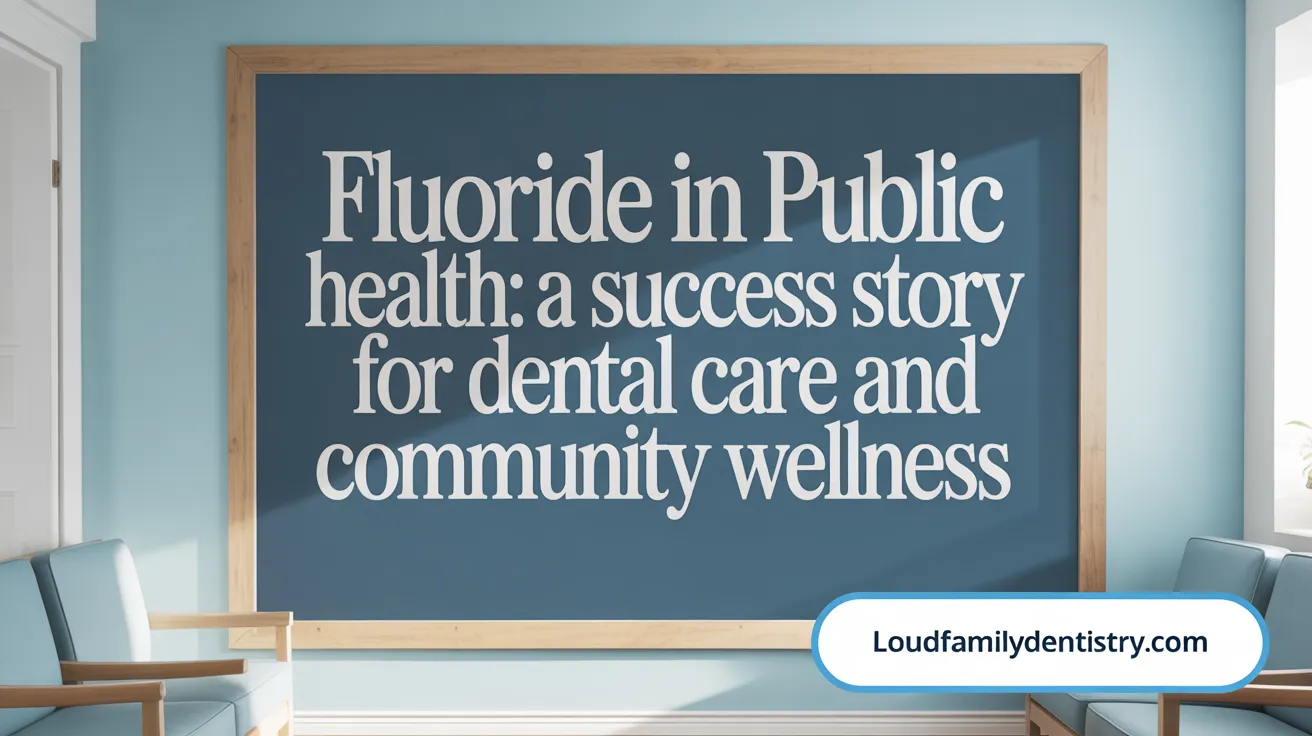Understanding Fluoride’s Crucial Role in Oral Health
Tooth decay remains one of the most common chronic diseases worldwide, but fluoride has long been a key weapon in the fight against cavities. This article explores how fluoride works to protect teeth, the various ways it is applied, its safety profile, the scientific evidence supporting its use, the myths surrounding it, and its significant impact on public health over the decades.
How Fluoride Protects Teeth: Mechanisms and Benefits

How does fluoride prevent tooth decay, and what is the chemistry behind it?
Fluoride works to prevent tooth decay mainly through its chemical interaction with tooth enamel. It forms a mineral called fluorapatite, which is much more resistant to acid dissolution than the natural hydroxyapatite in enamel. When fluoride ions are present in the mouth—either from toothpaste, water, or professional treatments—they adsorb onto the enamel surface. This facilitates remineralization by attracting calcium and phosphate ions, promoting the growth of more resilient fluorapatite crystals. These stronger crystals help protect teeth from acids produced by bacteria.
Furthermore, fluoride inhibits the enzymes involved in bacterial metabolism, reducing acid production which is a primary cause of enamel demineralization. This dual approach—strengthening enamel and reducing bacterial acid—significantly decreases the risk of cavity formation.
What are the main benefits of fluoride for dental health and cavity prevention?
Fluoride’s primary benefit is its ability to strengthen teeth against decay. It enhances the enamel’s resistance to acid attacks, which are responsible for cavities. By promoting remineralization, fluoride can repair early damage, reversing initial decay before it progresses into a cavity.
Moreover, fluoride reduces the growth of bacteria responsible for producing acid, further protecting teeth. The widespread use of fluoride in community water supplies, toothpaste, and professional fluoride treatments has been shown to cut cavity rates by around 25% across all age groups. Its preventive effects support lifelong oral health, decrease the likelihood of complex dental procedures, and promote healthier smiles.
Sources and Application Methods of Fluoride in Dental Care

What are the common sources and methods of fluoride application for dental care?
Fluoride is naturally present in many environments, including soil, water, and various foods. The most common sources of fluoride for dental health include fluoridated drinking water, fluoride-containing toothpaste, mouth rinses, and dietary sources like tea and seafood. Community water fluoridation, typically set at 0.7 milligrams per liter, is a widespread and cost-effective method to deliver low-level fluoride consistently across populations.
In daily oral hygiene, fluoride toothpaste is the primary product, recommended for use from the appearance of the first teeth. For children and adults, specific amounts—such as a smear for under 3 years and a pea-sized amount for older children and adults—are advised to prevent both decay and fluorosis.
Topical fluoride methods are highly effective and include mouth rinses and professionally applied treatments like varnishes, gels, and foams. Professional fluoride treatments are often used up to four times a year—especially in individuals at high risk for cavities—to strengthen enamel directly.
Systemic fluoride sources involve community water fluoridation and dietary supplements like fluoridated salt or milk, mainly beneficial before teeth have erupted. These approaches synergistically work to rebuild and reinforce enamel, inhibit the growth of cavity-causing bacteria, and reduce overall decay rates.
Overall, combining these sources and methods ensures broad, effective protection against tooth decay by continuously strengthening teeth, reversing early decay signs, and reducing bacterial acid production, vital stages for maintaining long-term oral health.
Evidence-Based Guidelines and Safety Considerations for Fluoride Use

What safety guidelines and considerations should be followed when using fluoride?
Fluoride is widely regarded as safe and effective when used properly. It is important to follow recommended guidelines to maximize its benefits and minimize potential risks. For children, the application of fluoride toothpaste should be age-specific: a smear for children under three years old and a pea-sized amount for older children and adults. Supervision during brushing ensures that children do not swallow excess fluoride.
Community water fluoridation, set at an optimal level of 0.7 mg/L, has been extensively studied and is endorsed internationally as a safe, cost-effective method to reduce tooth decay. Regulatory agencies regularly monitor fluoride levels to ensure they remain within safe limits for all populations.
Excessive fluoride intake during childhood can lead to dental fluorosis, characterized by mild discoloration or white spots on teeth. This risk primarily arises from overexposure to high fluoride levels during enamel formation. Professional fluoride treatments, such as varnishes and gels, are tailored for individuals at high risk of cavities and are administered by dental or medical professionals.
Overall, adherence to guidelines established by authorities like the ADA, CDC, and WHO ensures fluoride use remains a safe part of preventive oral health strategies.
Dispelling Common Myths and Misconceptions About Fluoride

What are some common misconceptions and myths about fluoride?
Many myths circulate regarding fluoride's safety and role in oral health. Some believe fluoride causes severe health issues like cancer or brain damage—claims that are not supported by credible scientific evidence at the levels used in water fluoridation and dental products.
Others think fluoride is an unnecessary additive or that it is harmful because it is a man-made chemical. However, fluoride is a naturally occurring mineral present in most water sources, soil, and various foods. It has been added to community water supplies since 1945 to prevent tooth decay effectively.
A prevalent myth is that fluoride in water acts as a medication rather than a mineral, leading some to oppose water fluoridation. In reality, adding fluoride to water is a controlled measure to ensure optimal levels that help strengthen teeth without risking adverse effects.
Dental fluorosis, which causes mild discoloration or spots on teeth in children, is often misunderstood as a severe health hazard. It is primarily a cosmetic issue caused by excessive fluoride intake during the years of tooth development. Proper supervision and following recommended fluoride use minimize this risk.
Many scare stories linking fluoride to health issues are based on misinformation or misinterpretation of data. Extensive scientific research over more than 70 years confirms that fluoride, when used appropriately, is safe and highly effective in preventing cavities.
Dispel these misconceptions through education based on reliable scientific evidence. Proper understanding of fluoride’s benefits and safe use reinforces its vital role in promoting public oral health while addressing concerns and correcting falsehoods.
Fluoride’s Historical Impact and Public Health Importance

What is the historical context and public health significance of fluoride in dental care?
The role of fluoride in dental health has a long and impactful history. It all began in the early 20th century, when researchers observed in Colorado Springs that residents had teeth with faint discoloration known as fluorosis — a harmless condition caused by excess fluoride. Interestingly, these same individuals experienced significantly less tooth decay compared to other populations.
Scientific investigations in the 1930s into fluoride's benefits confirmed that the mineral could strengthen tooth enamel by forming fluorapatite, a more acid-resistant crystal. This pivotal discovery laid the groundwork for public health initiatives.
In 1945, the city of Grand Rapids, Michigan, was the first to add fluoride intentionally to its public water supply as a controlled trial. The results were impressive, showcasing a reduction in cavities by approximately 25%. This breakthrough demonstrated that community water fluoridation could be an effective, affordable means of reducing dental decay.
Since then, fluoride has become integral to preventive dentistry worldwide. Over 70 years of scientific evidence has supported its safety and effectiveness. Today, community water fluoridation is recognized as a cost-effective, equitable public health measure that helps narrow oral health disparities.
By providing a steady, low-level source of fluoride, community water systems help promote oral health for all, regardless of income or access to dental care. This strategy has contributed significantly to declining dental caries rates across populations and has become a cornerstone of modern preventive dentistry, benefiting generations and improving overall quality of life.
Fluoride: A Cornerstone of Cavity Prevention and Oral Health
Fluoride stands as one of the most effective and scientifically supported agents in preventing tooth decay. Its ability to strengthen and repair tooth enamel, reduce harmful bacterial activity, and provide substantial cavity protection has been demonstrated across decades of research. With safe, regulated use through community water, toothpaste, and professional applications, fluoride continues to play a vital role in maintaining oral health for individuals and communities worldwide. Dispelling myths and adhering to recommended guidelines ensures that fluoride remains a trusted ally in promoting cavity-free smiles and reducing dental health disparities for generations to come.
References
- The Role of Fluoride in the Prevention of Tooth Decay - PubMed
- Fluoride: Uses, Benefits & Side Effects - Cleveland Clinic
- How fluoride helps to prevent tooth decay - MouthHealthy
- Fact Checked: Fluoride is a Powerful Tool for Preventing Tooth Decay
- Understanding How Fluoride Helps Prevent and Repair Tooth Decay
- 5. What role does fluoride play in preventing tooth decay?
- How Fluoride Fights Cavities - MouthHealthy
- The Role of Fluoride in Preventing Tooth Decay
- [PDF] The Role Of Fluoride In Preventing Dental Caries - Migration Letters
- Fluoride Treatment: The Role in Protecting Your Teeth from Decay
